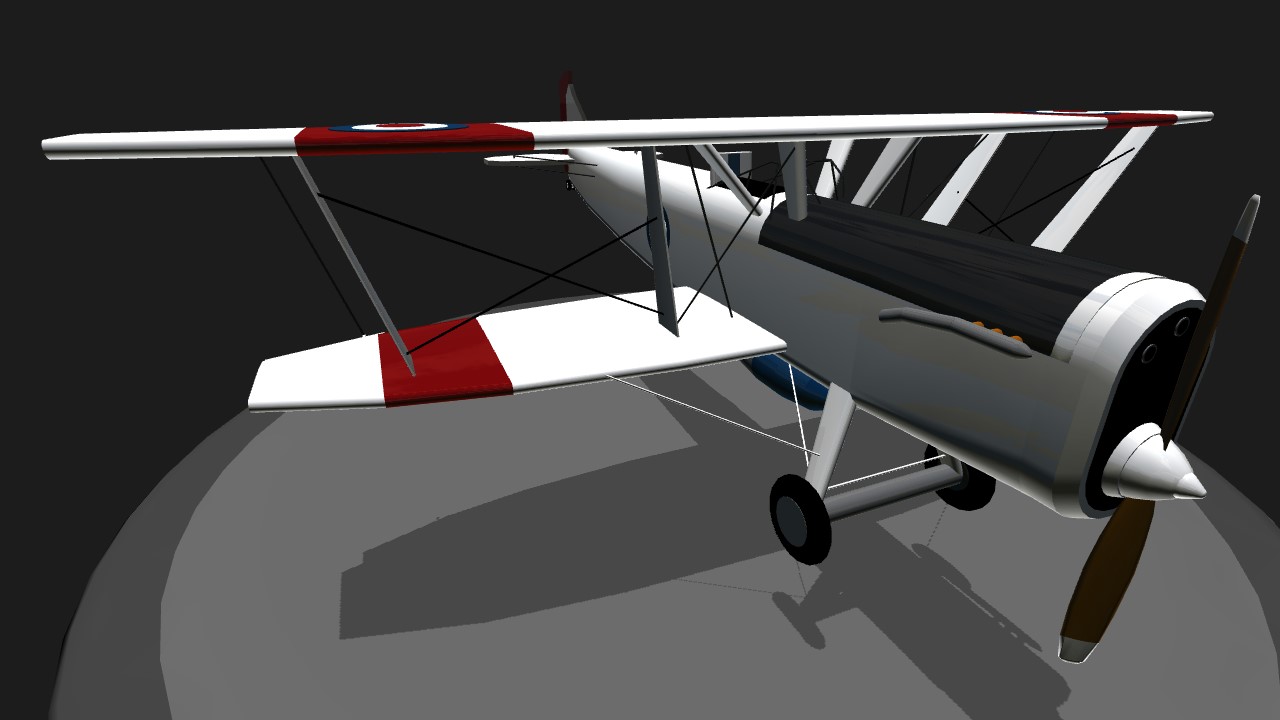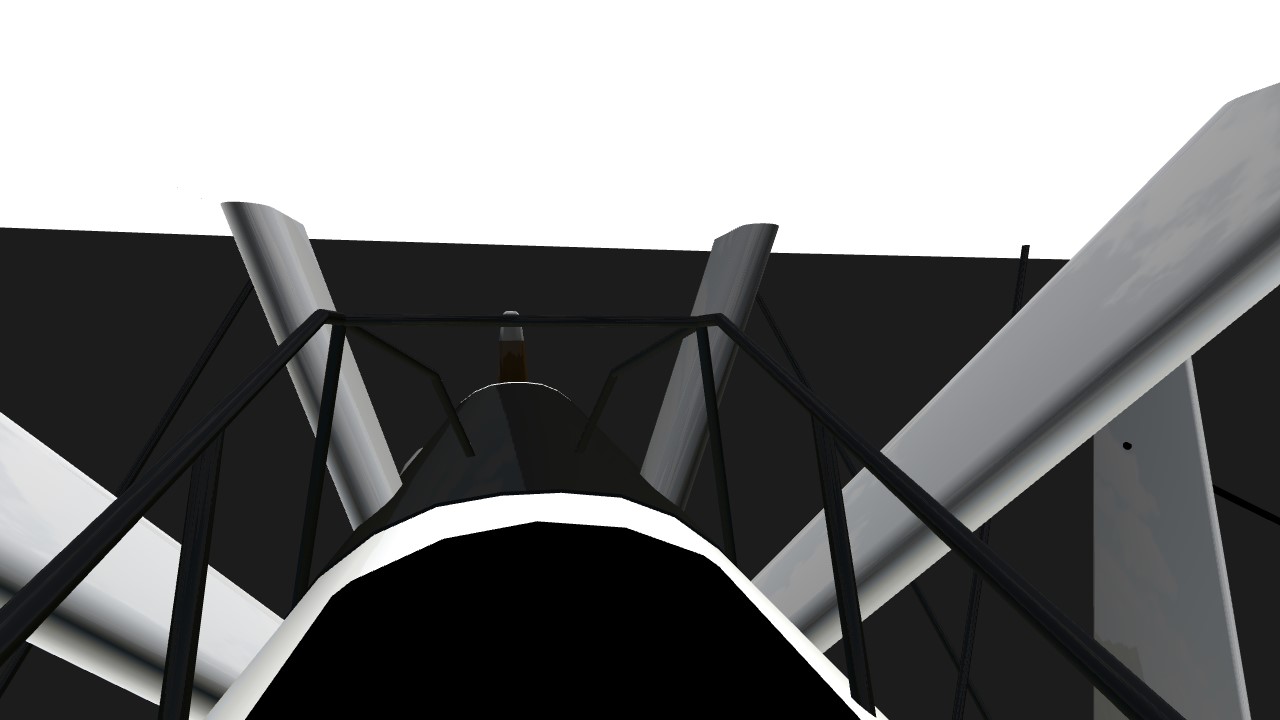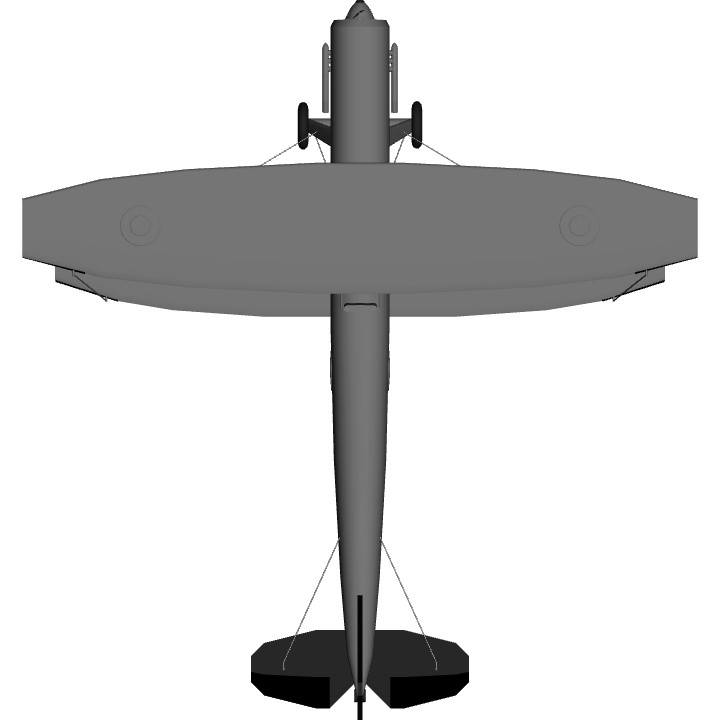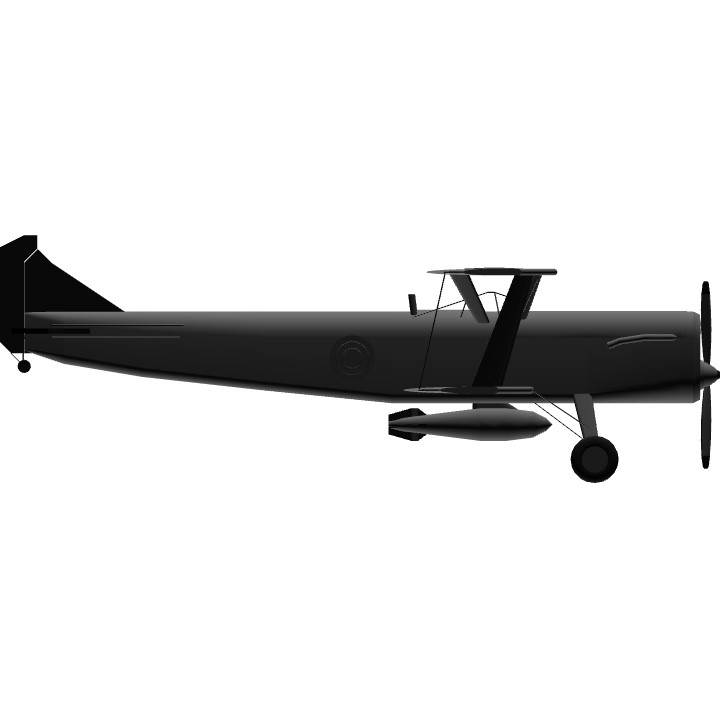The De Havilland Butterknife, named for its butterknife shaped wings, was a very successful heavy bomber in WWII. First manufactured and tested in 1913, the Butterknife was shown to be very maneuverable for a plane its size, so the need for a turret was none. The enemy, thinking it could not defend itself, would attack them, but succumb to the 3 nose mounted machine guns and this planes maneuverability. Its reputation as the butterknife further grew when a midair collision left it undamaged but sheared an enemy planes wing off. Someone on the ground joked “it sliced through the plane like it was butter” and cemented the name to books. Throughout the war, it served as a fighter bomber and torpedo bomber, with only 3 of the 1,000 manufactured were lost. This durability, kept it in service through WWII.
Credits:
Most of the plane-Othwane
Bomb-Othwane
Minor details and flight adjustments-AeroEngineering
Controls
Throttle-Throttle
Roll-Roll
Pitch-Pitch
Yaw-Yaw
Bomb-Ag1
I hope you all enjoy this plane. Most if it was built by Othwane, but he scrapped it and I took this wonderful scrapped biplane and finished it. Now brought to you be me! If you really like this plane, gp check out Othwane’s planes, you will probably like them.Have fun and enjoy the flight!
Specifications
General Characteristics
- Predecessor (No name)
- Created On Windows
- Wingspan 42.2ft (12.9m)
- Length 45.0ft (13.7m)
- Height 15.3ft (4.7m)
- Empty Weight 9,932lbs (4,505kg)
- Loaded Weight 10,709lbs (4,857kg)
Performance
- Horse Power/Weight Ratio 0.186
- Wing Loading 22.6lbs/ft2 (110.5kg/m2)
- Wing Area 473.4ft2 (44.0m2)
- Drag Points 8794
Parts
- Number of Parts 180
- Control Surfaces 10
- Performance Cost 681







can’t tell if this was real or not. lemme check
@BaconAircrafts thanks
Thats really noice m8
Nice